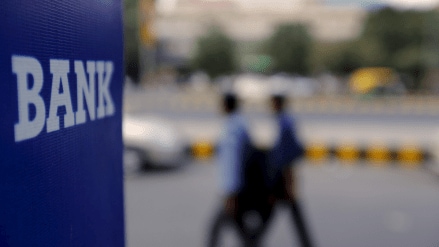The Reserve Bank of India’s (RBI) decision to extend the moratorium period for export credit, from 270 days to 450 days, is unlikely to hit banks’ bottomlines.
“These measures are at a much smaller scale, only targeting exporters who have some outstanding loans as of August 31,” said a senior banker from a state-run bank.
He highlighted that this is not comparable to the COVID-era moratorium, which covered a broader spectrum of loans and included additional credit guarantees. “Export credit is only a very, very small part of the overall bank loans portfolio, hardly Rs 2 lakh crore vis-à-vis Rs 170 lakh crore of overall outstanding,” he added.
While banks may need to make a standard 5% provision on deferred loans, the impact on profitability is expected to be negligible. The scheme offers a four-month moratorium on export credit repayments due between August 31 and December 2025, with accrued interest payable by March 31, 2026.
Most believe that these measures will provide a liquidity cushion for exporters grappling with deferred orders and payment delays amid global trade disruptions. “It is simply a deferment of the payment, giving exporters sufficient time to look for an alternate buyer or location,” added another banker.
Analysts say the move, along with the Centre’s export credit guarantee scheme, strengthens working-capital support at a time when Tier-2 and Tier-3 exporters are facing the brunt of weakening demand.
Industries most affected by US tariffs, including textiles, clothing, leather, chemicals, plastics and machinery, stand to gain the most. At the same time, segments that are already structurally weak, such as parts of the gems and jewellery space, may not benefit meaningfully, as many players are too financially strained to qualify for relief.
Said another PSU banker, “While the Credit Guarantee Fund Trust for Micro and Small Enterprises or CGTMSE-backed working capital scheme is still under finalisation, the RBI’s move is unlikely to affect the rupee or foreign markets significantly.”
Meanwhile, the rating agencies expect the measures to soften near-term cash-flow pressures for exporters without causing significant profitability implications for banks.
The 5% provisioning requirement may marginally increase credit costs, but the impact is likely to be manageable. Anil Gupta, Senior Vice President & Co Group Head – Financial Sector Ratings, ICRA, noted that monitoring will be key in the coming quarters, given the potential link to asset-quality outcomes. CareEdge Ratings highlights that the relief effectively prevents overdue export receivables from being classified as immediate, particularly for MSME exporters, which are more vulnerable to liquidity shocks than larger corporates.
Banks echo this sentiment. Officials at Axis Bank said the measures will help provide near-term liquidity, but emphasised that medium- to long-term outcomes will depend on demand visibility and exporters’ business fundamentals. The bank does not expect any changes in its provisioning strategy or NPA outlook at this stage.
Tamilnad Mercantile Bank (TMB) also expects the relief to act as a stabiliser rather than a reason to relax provisioning. “We will continue to maintain prudent coverage and do not expect any material change in our NPA outlook in the immediate term,” said Salee S Nair, MD and CEO.
“The RBI’s relief gives exporters breathing room by easing cash-flow pressures and delaying repayment stress, which should help prevent slippages and support banks’ asset quality in the near term,” said Shekhar Bhandari, President-SME, Kotak Mahindra Bank. “But the benefit is temporary — once the moratorium ends, repayment behaviour and global demand will ultimately determine whether these accounts remain healthy,” he added.
Anshul Chandak, head treasury, RBL Bank, said, “The RBI’s relief is a front-loaded, pre-emptive safeguard, aimed at shielding exporters and banks from potential stress amid tariff uncertainties. While we haven’t seen any stress in our portfolio yet, this move ensures continuity in export financing and confidence across impacted sectors like textiles, gems, and steel.”
Vivek Iyer, Partner and Financial Services Risk Advisory Leader at Grant Thornton Bharat, added that the forbearance framework should support higher export-linked credit, better management of stress in the cost portfolio, and improved profitability over the long term. He also noted that volatility in the dollar is unlikely to impact the rupee meaningfully as the RBI is expected to ensure adequate liquidity to maintain competitiveness.
